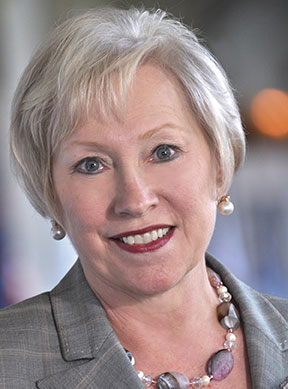The Future of Higher Education is Flexibility
The technological advances of the past few decades have triggered a conversation about the future of higher education.
By Nancy L. Zimpher
Chancellor Emeritus, The State University of New York
The technological advances of the past few decades have ushered in an era of distance-learning capability that has triggered a conversation about what, exactly, the future of higher education will look like.

Speculation ranges across the extremes: On the one hand, that the ability to earn entire credentials online, from certificates to PhDs, will inevitably force the extinction of brick-and-mortar campuses, to the other, in which critics argue that courses taken online are so much less rich than the traditional campus and classroom experience that they are “junk degrees.”
The truth, of course, lies somewhere in between. Importantly though, the determination of higher ed’s future is not an exercise in theory but rather a practical one with real-world outcomes that affect millions of people.
Every university and college leader today must be wide awake to this fact and accept the responsibility eagerly with both hands. In doing so they must do two things simultaneously: they need to know exactly who their students are and never take their eyes off the changing, fast-emerging needs of the world and workforce. With both of these things in sight, heads of colleges and universities need to create institutions or systems that can respond to the needs of students and sectors.
Closing the Gap
It will come as no surprise to this publication’s readership that today about 65 percent of jobs in the United States require a degree beyond high school.1 Moreover, the jobs that earn a middle-class living or better almost certainly, increasingly, require advanced education. New York State is even more competitive than average: nearly 70 percent of jobs will soon require a college degree, but right now only 46 percent of adult New Yorkers have one. This wide gap between the current reality and the projected need for educated, skilled citizens has created a fault line upon which we cannot expect to build stable, competitive, thriving economy and communities.
To close the gap we need to know who today’s students are. Unlike eras past, in which the picture of the typical college student was a young, white, male student living on campus and attending classes full time, today’s student profile is very different.2 Forty percent of college students are age 25 or older. Fifty-six percent are female. Twenty-eight percent are raising families while they earn their degree. Sixty-three percent of students are enrolled full-time, and 36 percent of students work part-time while taking classes and another 26 percent work full-time.
Today, 41 percent of students live on campus. The remainder, owing to their life obligations — juggling jobs, families, and expenses — commute. Fifty-eight percent of college students today are white; 17 percent are Hispanic and 15 percent are black — the fastest growing segments of the U.S. population and also the most underserved.
Expanding Options
The world has changed, and higher education needs to not only change with it but stay ahead of the curve, ready to receive the students who come to us. The future of higher education is flexibility.
This means expanding our operations so that we can meet students where they are, on their time. It means providing an array of avenues by which to earn a degree and support to ensure they complete. High-quality online learning opportunities are a critical piece of this.
One out of three New Yorkers who earn a college degree do it at The State University of New York. In the last three years, more than 320,000 of our students have taken online classes, and 8,000 have received a SUNY degree by taking the majority of their classes online. Our online learning platform, launched in 2014, is the largest in the world. But for SUNY it is not enough to be the biggest, we need to be the best. This is our commitment to New York: to prepare students by any and every high-quality means possible to earn a college degree and to build their best life.
Nancy L. Zimpher served as the twelfth chancellor of The State University of New York from 2009 to 2017, during which time she was also chair of the New York Academy of Sciences Board of Governors from 2011 to 2016. In January 2018 Dr. Zimpher will become a senior fellow at the Rockefeller Institute of Government, where she will also be the founding director of the nation’s first Center for Education Pipeline Systems Change.
- A. P. Carnevale, N. Smith, & J. Strohl. Recovery: Job Growth and Education Requirements through 2020. Washington, DC: Georgetown University Center on Education and the Workforce, McCourt School of Public Policy (2013).
- Among many, The Bill & Melinda Gates Foundation has done excellent work compiling college student demographics, including information that can be found here.
Warning: Undefined variable $showit in /var/www/nyas_develop/nyas/public/wp-content/themes/nyas-theme-child/includes/shortcodes.php on line 1802
